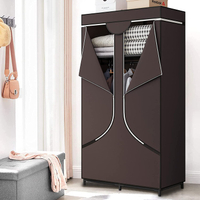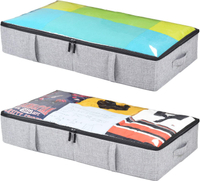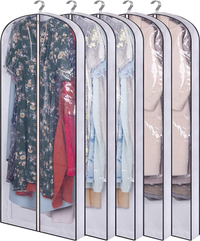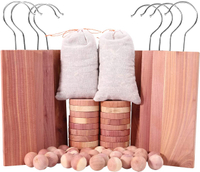Pro organizers share 8 long term clothes storage secrets – so out-of-season items stay as good as new
Keep your clothes protected from wear and damage with these expert techniques


Spring is, of course, the perfect time of year to give your home a full refresh. Often, this also includes a major wardrobe overhaul.
Whether you’re swapping out your winter staples for new seasonal picks or just need to change up your options every now and again, storing clothes out of sight (and out of mind) is a great way to free up closet space, and is good opportunity to organize your clothes.
While donating or handing off some items is an option, storing off-season or currently out-of-style clothes until they come back around is both economical and environmentally friendly. But what should you do if you need to store clothes long-term? We turned to a few of our favorite organizers to find out their top tips.
How experts store clothes long term
From the steps you need to get prepped for storing clothes long term to clever closet organizers and bedroom storage ideas, this is what the professionals do.
1. Clean and assess damage
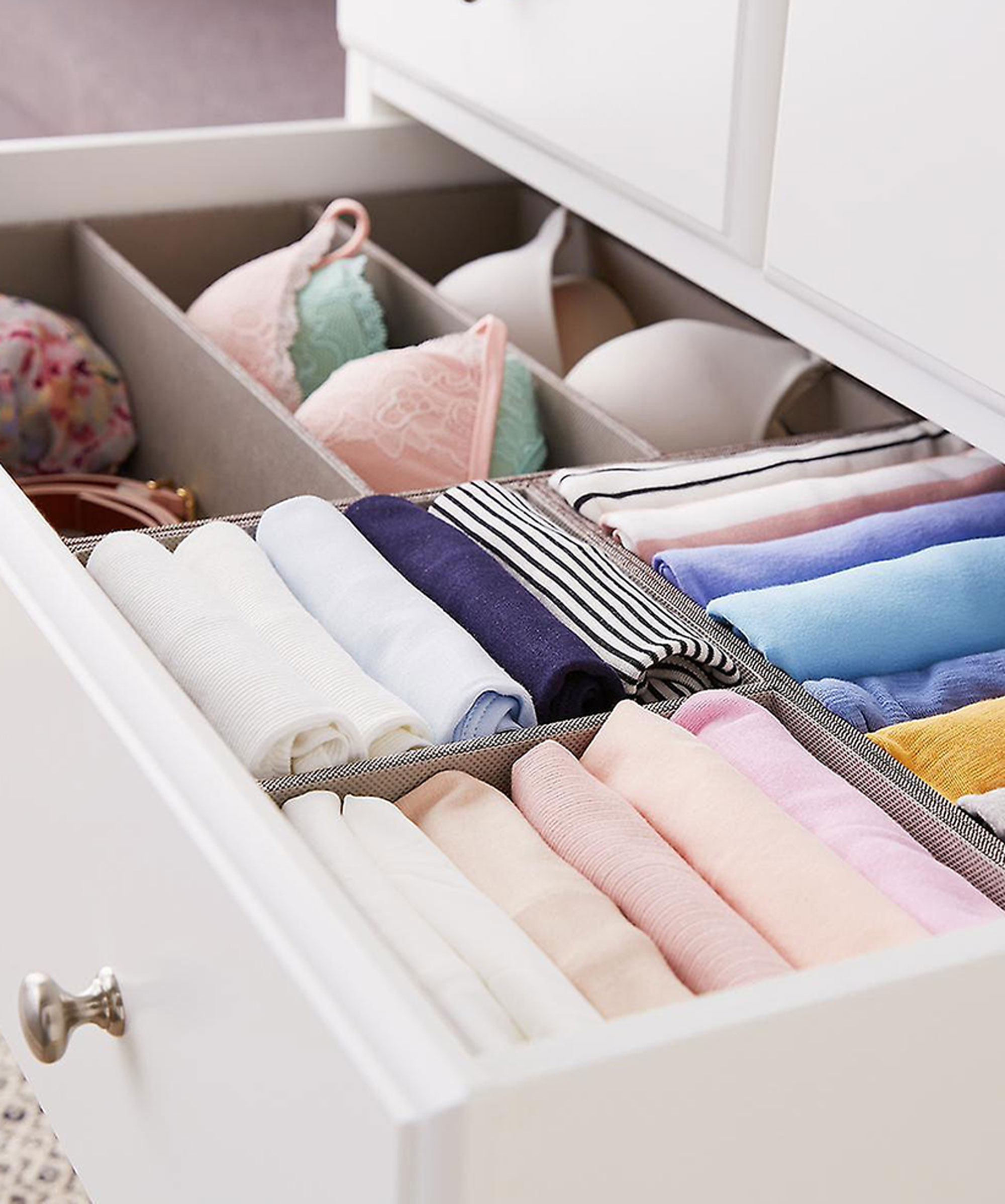
Before you start storing your garments, professional organizer and author of The Folding Book, Janelle Cohen tells us you should really give your clothes a thorough assessment first.
'Start by evaluating the item's condition. Clothing that is in good condition and has not been worn frequently is more likely to be suitable for long-term storage,' she explains. 'On the other hand, clothing that is damaged, stained, or shows signs of wear may not be worth keeping.'
Marcia Sloman of Under Control Organizing agrees, noting that some damaged items might actually be salvageable – but, regardless, everything you hang onto should be cleaned before storing.
'The first task before storing clothing long-term is to be sure the items are clean and without any need of repair,' says Sloman. 'If repairs are needed, first be sure the items are clean, and remove them from your closet. If you are a DIYer, store these items near your sewing box or craft area. Otherwise, get them ready for the seamstress, weaver, or shoe repair.'

Janelle Cohen is the professional home organizer behind Straighten Up By Janelle, author of The Folding Book, and TV personality, known for her appearances on top shows like The Today Show and Good Morning America. With a passion for creating organized and functional living spaces, Janelle uses her expertise to help clients declutter, streamline, and optimize their homes for maximum efficiency and style.

Marcia Sloman has been a professional organizer for more than thirty years. By helping individuals during and after times of life’s transitions, Marcia is particularly well suited to work with those facing personal or professional shifts, as well as anyone coping with the avalanche of tasks and stuff. Her specialty focuses on help for individuals challenged by ADHD, anxiety, medical issues, or life changes such as job changes, birth, death, moving, or divorce.
2. Store or toss?

You'll be pleased to know that decluttering is not everything. Once you determine the quality of each piece, Cohen says you should consider two other elements: functionality and sentimentality.
'Examine the clothing that you may be storing long term,' suggests Sloman. 'Decide if the items will be worn again next year or to a future formal event. Check your budget for off-site storage vs an in-home storage area.'
Cohen fully agrees – just because a piece of clothing isn’t beaten to shreds, you might not need to hang onto it. 'Consider whether the item fits your current lifestyle and if it is likely to be worn again in the future,' she says. 'If the item no longer suits your style or does not fit properly, it may be better to donate or consign it rather than store it long term.'
On the other hand, some items should stay – even if they’re not in the best shape. 'If an item holds significant sentimental value, it may be worth keeping even if it is not frequently worn,' Cohen says. 'For example, a wedding dress or a family heirloom may be worth storing long term.'
3. Where will you store clothes long term?
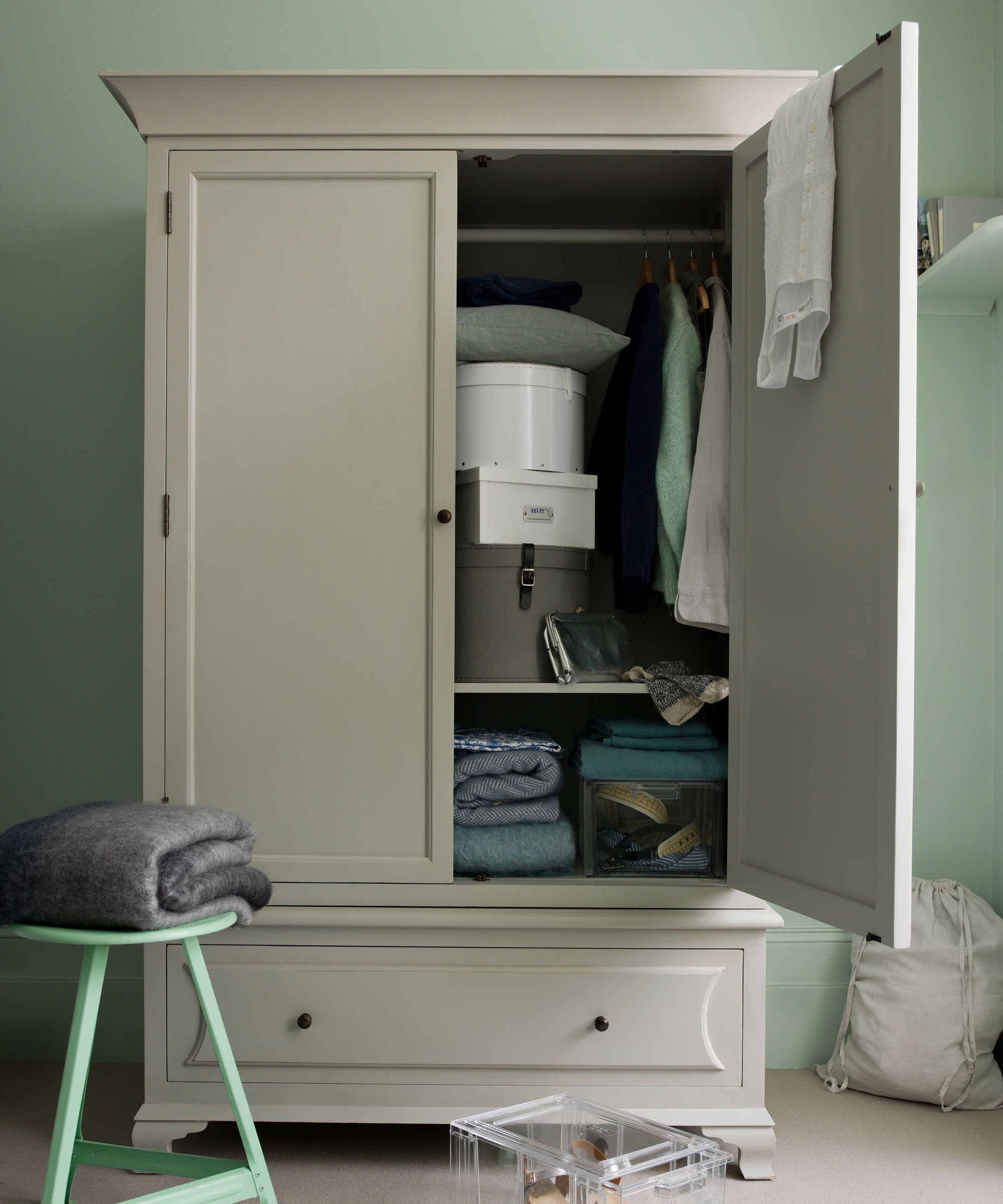
Deciding what you’re storing is just as important as figuring out where you’re stashing it, says Sloman. If you’re doing a full seasonal swap, you should be very structured in how you go about the entire process.
'If you will be shifting your items from your active closet to an in-home storage closet, find a temporary location to place your items,' she says. 'Your transition will take place in three shifts between the active closet and storage closet.
'First, remove clothing from your active closet and set it aside,' she says. This is a great opportunity to clean a clothes closet. 'Then, move clothing from storage to your active closet, and finally, move your clothing from the temporary location to your in-home storage closet.'
Another thing to consider is the quality of the pieces you take out of long term storage – especially before you add anything to the closet or storage unit.
'Be sure to air out stored clothing and check for damage,' says Sloman. 'If you find moth damage, do not place [the items] in your active closet.'
Similarly, don’t place anything into storage until you get rid of moths. We have a great recipe for homemade moth repellent, if you want to keep to natural ingredients.
4. Consider the pros and cons of offsite storage
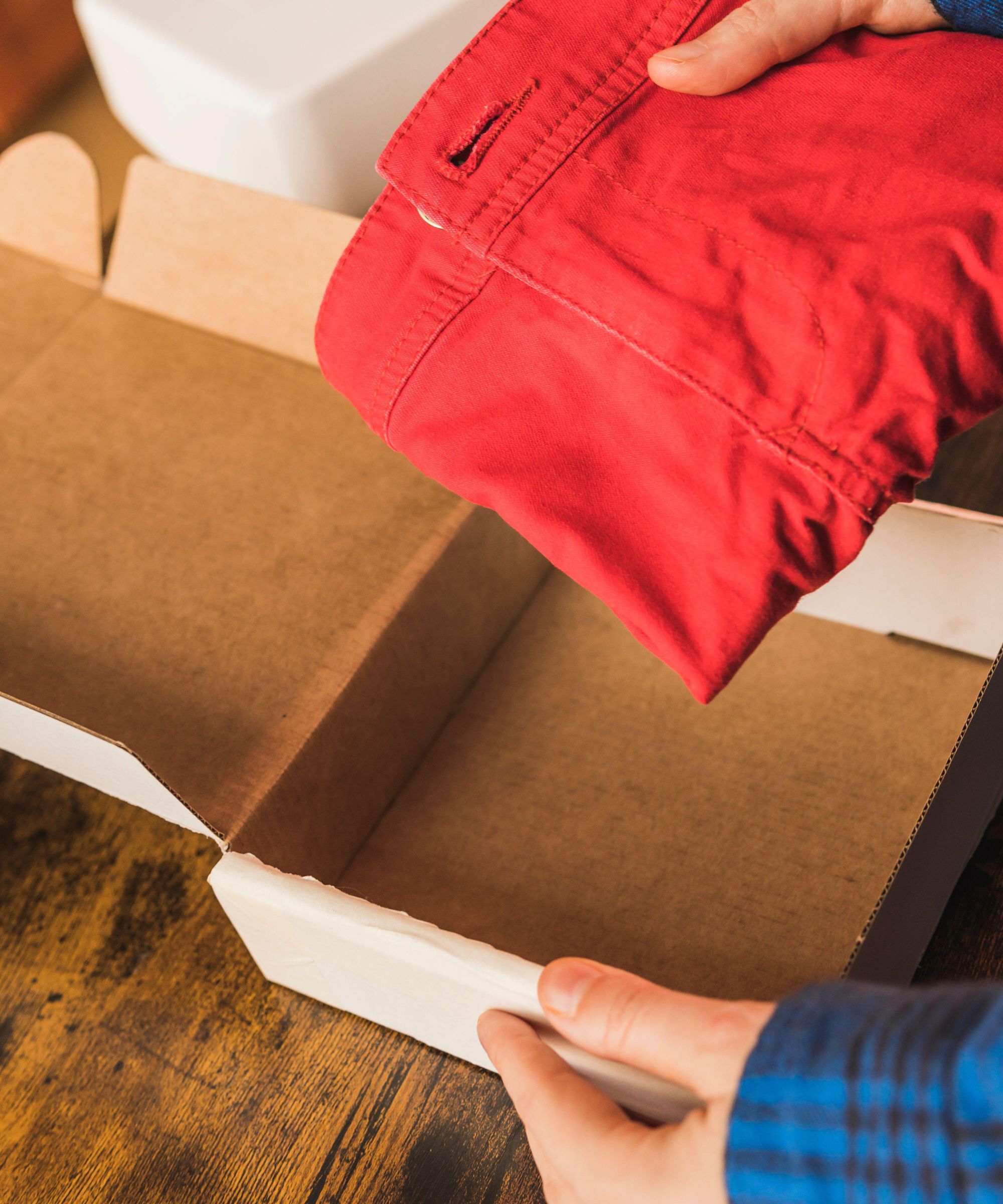
Depending on how long you plan to store your garments, Sloman says offsite storage might be the way to go. Why use up valuable closet space for items you don’t plan on wearing again anytime soon?
'If you need long term offsite clothing storage for luxury items, there are companies that offer a full suite of services to preserve your fashions,' Sloman explains. 'For those with limited budgets, many dry cleaners will clean and store your clothing.'
One thing worth considering, however, is exactly what you’re storing. If grandma left you her fur collection, for example, that will require a different storage facility than your standard down puffers. 'If you own fur outerwear, it’s best to have them stored between seasons in temperature-controlled environments or the skins can dry out,' says Sloman.
5. Prepare your clothes for long term storage

It’s easy to think that you just need to shove your clothes out of the way in a closet that’s normally unused, but Sloman warns this is a common mistake.
'If you have the space in your home to store long term, a separate closet that is temperature and humidity controlled away from daily activity is best,' she says. 'Hang durable fabrics such as jackets, shirts, and pants. Fold delicate fabrics that will get misshapen, like knits and sweaters, over on a hanger.'
Along with picking the right closet, you probably will want some long term closet organization ideas and storage accessories.
'[Consider] portable covered clothing racks, separate, cedar-lined closets, under bed storage ideas, non-porous boxes, garments bags, and vacuum sealed/space bags,' says Sloman. 'If boxing [up clothes], separate colorful fabrics with acid-free tissue, and box footwear separately. Lastly, use cedar blocks or moth-away sachets (not moth balls or flakes) to deter critters.'
These cedar blocks from Amazon are highly rated, and we like these rose-scented moth away sachets. For vacuum-packing clothes, this pack of 20 vacuum storage bags is Amazon's top buy. More of our favorite buys are below.
Opt for folding rather than hanging your clothes, as hangers (especially wire hangars) can damage clothes over time.
Portable closet organizer, $34.99, Amazon
This high-quality, rust-proof portable closet is perfect for creating hanging space for long term storage. The non-woven cover protects garments and fabrics from collecting dust and keeps your items compact and tucked away until the next use.
Two Underbed Fabric Storage Containers, $29.99, Amazon
Underbed storage is a great way to condense your off-season clothes and other out-of-use garments in an easy-to-conceal space. These bags are the perfect shape for sliding under a bed, and the front and side handles make it easy to pull them back out as needed.
6. Use garment bags
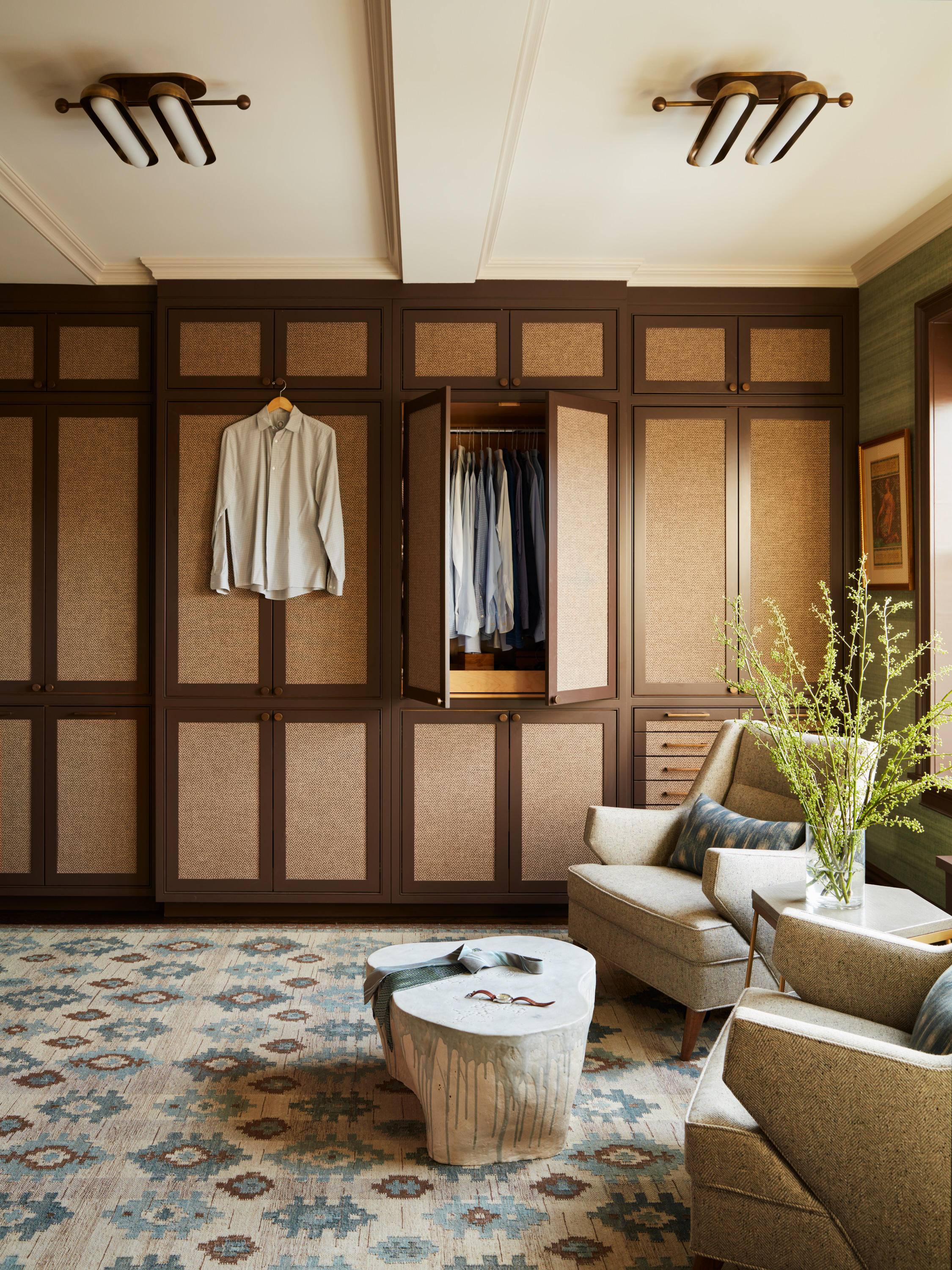
If you have a dedicated closet or storage room with hanging space, Cohen says you should always hang garments with a protective barrier.
'Garment bags are a good solution for formal wear that you want to make sure stays protected in long periods of storage,' Cohen explains. 'Add cedar products like cedar blocks or hangers to deter moths.'
Clear Garment Bags, $27.99 for five, Amazon
Assuming your clothes don’t require heavy-duty and climate-controlled storage, clear garment bags are the best bet for storing clothes long term. This way, you can easily thumb through your storage racks until you find what you need, when you need it.
Cedar Closet Accessories, 60 Pieces, $25.98, Amazon
While cedar hangers and cedar-lined closets are great, smaller ready-to-use cedar accessories are more versatile and can be used in places other than just your closet. You can also tuck cedar items into under-bed storage, dresser drawers, and vacuum-sealed bags.
7. Use vacuum-sealed bags
Attics and basements are great for stowing away items until a later date, but not everyone can be so lucky. If you’re short on storage space, Cohen says vacuum-sealed bags are the way to go.
“Vacuum-sealed storage bags allow you to compress clothing items and save space,” she explains. “You can store them in bins in the garage, under the bed, or on top of the closet. They double your space and are airtight which helps to prevent moisture and damage.”
Spacesaver Vacuum-Sealed Storage Bags, $19.99 for 6, Amazon
There are plenty of options out there for vacuum-sealed bags, but pros recommend opting for ones that come with your own pump. Store everything together in one place, making it even easier to swap clothes in time for the coming season.
8. Can the fabric withstand long term storage?
Okay, so you’ve determined that you want to hang onto an item, it’s in great condition, and that you will wear it again in the future. Cohen warns that long-term storage still might not be the answer.
'Consider the fabric type,' Cohen warns. 'Some fabrics, such as wool and silk, can be prone to moth damage if left in storage for a long time. Synthetic fabrics, on the other hand, can be more durable and may be suitable for long-term storage.'
FAQs
What is the best way to store clothes long term
It is really important to store clothes that have been cleaned first, and which are fully dry. Then, ensure that the storage you have chosen for them protects them from temperature fluctuations, moisture, sunlight, invasive pests and from squashing (except when choosing vacuum packing). Ensure storage space is ventilated, too, and that your clothes are stored in a way that avoids creasing – rolling is better than folding, for example. We look at various ways to fold shirts to avoid creasing in our dedicated feature.
Should I store clothes in plastic or cardboard?
It is better to store clothes in plastic because tough (non PVC) storage boxes can protect about moisture and pests where cardboard can't. The boxes should have tightly fitting lids, ideally lockable, and should be opened up every now and then to be checked and aired.
Clearly, light, moisture and pests are a problem when storing clothes long term, so ideally choose a space that's windowless. This might mean a garage or basement or attic if you're storing at home. In any space that's likely to flood, ensure the storage is sealed and off the ground, and check it regularly to ensure no moisture or pests have invaded.
Sign up to the Homes & Gardens newsletter
Design expertise in your inbox – from inspiring decorating ideas and beautiful celebrity homes to practical gardening advice and shopping round-ups.

Ashley Chalmers is a freelance writer for Homes & Gardens with over 10 years' experience as a digital writer and content creator. Ashley started her career in entertainment and fashion PR in New York, before moving to the French countryside and taking up travel blogging. Now, Ashley lives in London. Her passion for travelling is only matched by her love of making her house feel like a home, and she loves to include her finds from around the world in her decor.
-
 How to clean a patio – 6 different methods, and when you must use a chemical cleaning agent
How to clean a patio – 6 different methods, and when you must use a chemical cleaning agentFrom manual scrubbing, natural solutions or calling in the pros, industry experts reveal the benefits and considerations of each method
By Andy van Terheyden Published
-
 Kris Jenner's favorite air fryer, the Ninja Crispi, is the perfect small kitchen solution – it deserves a place on the most compact of countertops
Kris Jenner's favorite air fryer, the Ninja Crispi, is the perfect small kitchen solution – it deserves a place on the most compact of countertopsKris approves of this compact yet powerful air fryer, and so do our own kitchen appliance experts, praising it for its multifunctionality
By Hannah Ziegler Published
